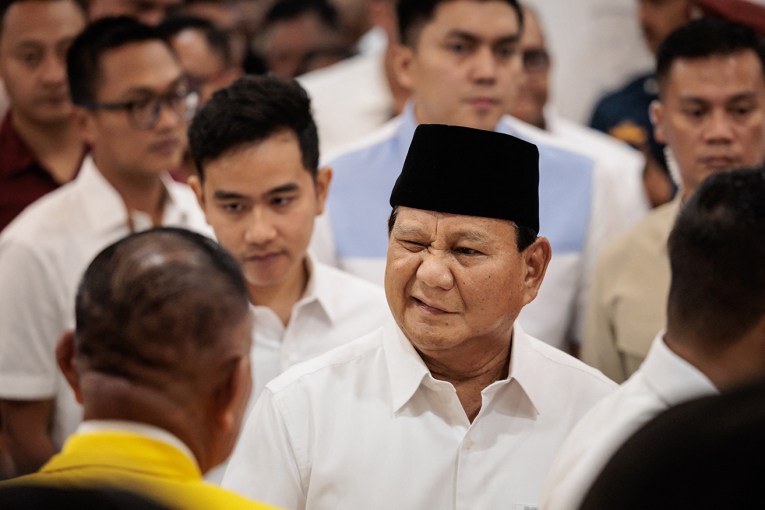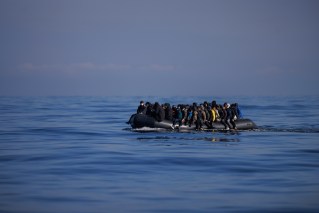New rules: two in a cockpit
Lufthansa has agreed to abide by new European Union rules requiring two crew members in cockpits at all times, in what is a swift reversal from its chief executive’s comments that such a change was not necessary.
The European Union said it would now advise all EU airlines to require two crew members in the flight deck, effectively ensuring that a rule which is already mandatory in the US becomes the standard in Europe as well.
• Co-pilot hid sick notes from his employer
• Local airlines respond with security overhaul
• Who was Germanwings copilot Andreas Lubitz?
• Germanwings copilot crashed deliberately: prosecutor
Prosecutors believe Andreas Lubitz, 28, locked himself alone in the cockpit of the Airbus A320 on Tuesday and deliberately steered it into a mountain, killing all 150 people on board.
Within hours of prosecutors disclosing that scenario, several airlines announced immediate changes to their policies to ensure pilots were never left alone in the cockpit.
Lufthansa’s chief executive Carsten Spohr initially said he did not “see any need to change our procedures” and that “we shouldn’t lose ourselves in short-term measures”.
The remarks drew derision on social media, with passengers saying they would not fly. Within a day the company reversed itself.
“The passenger airlines of the Lufthansa Group will put this new rule into place as soon as possible in agreement with the relevant authorities,” Lufthansa said in a statement.
The Lufthansa Group also includes Germanwings, Austrian Airlines, Swiss and Eurowings.
EU aviation regulator introduces new Standard in Europe
Under rules already practiced in the US, whenever either the pilot or co-pilot steps out of the cockpit, a second member of the crew such as a flight attendant is required to enter.
A rogue pilot determined to lock the door and set a deadly course would first have to overpower a colleague.
That will now become the effective standard across the European Union after the EU aviation regulator recommended all European airlines adopt it.
While such a recommendation is not technically mandatory, an airline could be challenged in national courts if it ignores it, an EU official said.
Making the recommendation is faster than the process for drawing up new mandatory regulations.
All German airlines have now agreed to the change.
German pilots’ union Vereinigung Cockpit, which also initially said it would be better to wait for the full crash report before making any changes, welcomed the decision.
Lufthansa also said it was creating a new role of group safety pilot, putting Werner Hass, the man previously in charge of safety at flagship brand Lufthansa, in charge of safety at all four airlines owned by the group.
Australia reviewing cockpit safety requirements
The Australian Federal Government and Qantas are also considering changes to cockpit security, with Deputy Prime Minister Warren Truss saying Australia’s aviation agencies were investigating if current cockpit safety requirements need further strengthening.
Precedents of deliberate crashes
Investigators believe the co-pilot of a German airliner deliberately crashed the plane into the French Alps earlier this week, killing all 150 people aboard.
While rare, there have been previous such incidents in which a pilot or co-pilot have brought down an aircraft.
Mozambique Airlines
November 29, 2013: Mozambique Airlines (LAM) flight TM 470 flying from Maputo to Luanda goes down in north-eastern Namibia, killing 33.
Investigators said the captain had a “clear intention” to crash the plane.
They said flight recorders showed the Embraer 190 went down while Captain Herminio dos Santos Fernandes manipulated its autopilot in a way which “denotes a clear intention” to bring the plane down.
EgyptAir
October 31, 1999: EgyptAir flight 990, a Boeing 767 en route from New York to Cairo crashes into the Atlantic Ocean shortly after take off, killing all 217 on board.
An analysis of the black boxes showed that the pilot caused the accident and declared shortly before the crash: “I have just taken my decision. I put my faith in God’s hands”.
SilkAir
December 19, 1997: A Singaporean SilkAir Boeing 737 plunges into a river in Indonesia on route from Jakarta to Singapore. All 104 passengers and crew aboard were killed. US investigators say the captain probably crashed the plane on purpose.
Media reported that the captain, who had recently been disciplined and demoted, and who was in debt, had disconnected the black boxes to cover up his act.
An investigation by Singaporean authorities was inconclusive.
Royal Air Maroc
August 21, 1994: The pilot of a Royal Air Maroc jet crashes the plane into the Atlas mountains shortly after taking off from Agadir for Casablanca. All 44 aboard are killed.
The probe, based on the last words of the co-pilot, quickly concluded it was suicide.
Japan Airlines
February 9, 1982: A Japan Airlines DC-8 crashes into Tokyo Bay on approach to Haneda Airport. Twenty four people are killed.
A probe concluded that the pilot, who survived, was mentally unstable.
Under speculation
Pilot suicide is also among the various hypotheses considered in last year’s disappearance of Malaysia Airlines Flight MH370 with 239 people aboard.
The communications system was deliberately deactivated and the flight changed course.
“The current regulations do not require airlines to replace a pilot who temporarily leaves the cockpit,” Mr Truss said.
“Careful consideration needs to be made following thorough investigation to ensure that altering current procedures does not open other potential vulnerabilities.
“Our two major international and domestic airlines are undertaking their own safety and security risk assessments of cockpit procedures following the recent tragedy.”
The review comes as an aviation expert said he feared the Germanwings crash may not be the last of its kind, and called on airlines and unions to guard against future similar tragedies.
Strategic Aviation Solutions chairman Neil Hansford told ABC NewsRadio there had been several similar incidents in the past.
“We didn’t have these doors on cockpits to keep them sanitary before 9/11 so this is another flow-on effect,” Mr Hansford said.
“Whilst we’ve stopped the hijackers, we’ve created another potential situation where once there’s only one person in the flight deck, they’ve actually got control.
“This won’t be the last you’ll hear because I think some of the analysis of past or recent crashes will come up with a very similar conclusion.
“We’ve stopped hijacking but on the other hand we’ve created another situation which really is going to put a major focus in airlines on human factors monitoring.”
A Qantas spokesman also said safety management systems were in place to protect the cockpit of its planes but the airline was considering whether changes were needed.
“We have a comprehensive safety management system that guards against risks to our operations. This includes multi-layered systems to protect the flight deck on our aircraft,” he said.
“We are monitoring the information coming out of the French investigation and considering if any changes to our existing safeguards are needed.”
The spokesman said psychometric testing was carried out as part of the pilot recruitment process and ongoing performance monitoring was carried out for all pilots to identify any potential issues that may affect a pilot’s performance.
“All pilots must complete regular crew resource management training, which among other things includes training in stress management, teamwork, communication and behavioural awareness,” he said.








